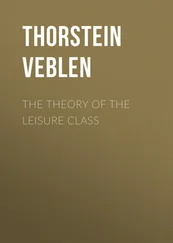This necessary specialisation and detail training has large consequences for the growth of technology as well as for its custody and transmission. It follows that a large and widely diversified industrial scheme is impossible except in a community of some size, - large enough to support a number and variety of special occupations. In effect, substantial gains in industrial insight and proficiency can apparently be worked out only through such close and sustained attention to a given line of work as can be given only within the lines of a specialised occupation. At the same time the industrial community must comprise a full complement of such specialised occupations, and must also be bound together in a system of communication sufficiently dose and facile to allow the technological contents of all these occupations to be readily assimilated into a systematic whole. The industrial system so worked out need not be of the same extent as any one local group of the people who get their living by its use; but it seems to be required that if several local groups are effectively to be comprised in a single industrial system conditions of peace must prevail among them. Community of language seems also to be nearly necessary to the maintenance of such a system. Where the various local groups are on hostile terms, each will tend to have an industrial system of its own, with a technological character somewhat distinct from its neighbours. 62If the degree of isolation is pronounced, so that traffic and communication do not run freely between groups, the size of the local group will limit the state of the industrial arts somewhat rigidly; and on the other hand a marked advance in the industrial arts, such as the domestication of crop plants or animals or the introduction of metals, is likely to bring about such a redistribution of population and industry as to increase the effective size of the community. 63Among the peoples on the lower levels of culture there prevails commonly a considerable degree of isolation, or even of estrangement. In a great degree each community is thrown on its own resources, and under these circumstances the size of the community may become a matter of decisive importance for the industrial arts. Where a serious decline in the numbers of any of these savage or barbarous peoples is recorded it is also commonly noted that they have suffered a concomitant decay in their technological knowledge and workmanship. 64In view of these considerations it is probably safe to say that under settled conditions any community is, commonly, no larger than is required to keep up and carry forward the state of the industrial arts as it runs. The known evidence appears to warrant the generalisation that the state of the industrial arts is limited by the size of the industrial community, and that whenever a given community is broken up or suffers a serious diminution of numbers its technological heritage will deteriorate and dwindle even though it may apparently have been meagre enough before.
The considerations recited above are matters of commonplace observation and might fairly be taken for granted without argument. But so much of current and recent theoretical speculation proceeds on tacit assumptions at variance with these commonplaces that it seems pertinent to recall them, particularly since they will come in as premises in later passages of the inquiry.
Given the material environment, the rate and character of the technological gains made in any community will depend on the initiative and application of its members, in so far as the growth of institutions has not seriously diverted the genius of the race from its natural bent; it will depend immediately and obviously on individual talent for workmanship - on the workmanlike bent and capacity of the individual members of the community. Therefore any difference of native endowment in this respect between the several races will show itself in the character of their technological achievements as well as in the rate of gain. Races differ among themselves in this matter, both as to the kind and as to the degree of technological proficiency of which they are capable. 65It is perhaps as needless to insist on this spiritual difference between the various racial stocks as it would be difficult to determine the specific differences that are known to exist, or to exhibit them convincingly in detail. To some such ground much of the distinctive character of different peoples is no doubt to be assigned, though much also may as well be traceable to local peculiarities of environment and of institutional circumstances. Something of the kind, a specific difference in the genius of the people, is by common consent assigned, for instance, in explanation of the pervasive difference in technology and workmanship between the Western culture and the Far East. The like difference in “genius” is still more convincingly shown where different races have long been living near one another under settled cultural conditions. 66It should be noted in the same connection that hybrid Peoples, such as those of Europe or of Japan, where somewhat widely distinct racial stocks are mingled, should afford a great variety and wide individual variation of native gifts, in workmanship as in other respects. Hybrid stocks, indeed, have a wider range of usual variability than the combined extreme limits of the racial types that enter into the composition of the hybrid. So that a great variety, even aberration and eccentricity, of native gifts is to be looked for in such cases, and this wide range of variation in workmanlike initiative should show itself in the technology of any such peoples. Yet there may still prevail a strikingly determinate difference between any two such hybrid populations, both in the characteristic features of their technology and in their routine workmanship; as is illustrated in the contrast between Japan and the Western nations. These racial differences in point of endowment may be slight in the first instance, but as they work cumulatively their ulterior effect may still be very marked; and they may result in marked differences not only in respect of the character of the technological situation at a given point of time but also in the rate of advance and the direction taken by the technological advance. So in the case of the Far East, as contrasted with the Occidental peoples, the genius of the races engaged has prevailingly taken the direction of proficiency in handicraft, rather than that somewhat crude but efficient recourse to mechanical expedients which chiefly distinguishes the technology of the West.
The stability of racial types makes it possible to study the innate characters of the existing population under less complex and confusing circumstances than those of the cultural situation in which this population is now found. By going back into the earlier phases of the Western culture the scrutiny of the living population of Europe and its colonies can, in effect, be pushed back in a fragmentary way over an interval of some thousands of years. Such acquaintance as may in this way be gained with the spiritual makeup of the peoples of the Western culture at any point in its past history and prehistory should bear immediately and without serious abatement on the native character of the generation in whose hands the fortunes of that culture now rest; provided only that the inquiry assures itself of the racial continuity, racial identity, of these peoples through this period of time. This question of race identity is no longer a matter of serious debate so far as concerns the peoples of northern and western Europe, within the effective bounds of the Occidental civilisation and as far back as the beginning of the neolithic period.
Assuredly there is debate and uncertainty as to local details of racial mixture in nearly all parts of this cultural area at some point in past time, but these uncertainties of detail are not of such a nature or such magnitude as to vitiate the data for an inquiry into the general characteristics of the races concerned. By and large, the mixture of races in north Europe has apparently not varied greatly since early neolithic times, and the changes that have taken place are known with some confidence, in the main. Much the same holds true for the Mediterranean seaboard, although the changes in that region appear to have been more considerable and are perhaps less readily traceable. For northern and western Europe taken together, in spite of considerable local fluctuations, the variations in the general racial composition of the peoples has, on the whole, not been extensive or extremely serious since the latter part of the stone age. The three great racial stocks 67of Western civilisation have apparently shared their joint dominance in this culture among themselves since about the time when the use of bronze first came into Europe, which should be before the close of the stone age. And these three stocks are not greatly alien to one another; two of them, the Mediterranean and the blond, being apparently somewhat closely related in point of descent and therefore presumably in point of spiritual makeup.
Читать дальше












